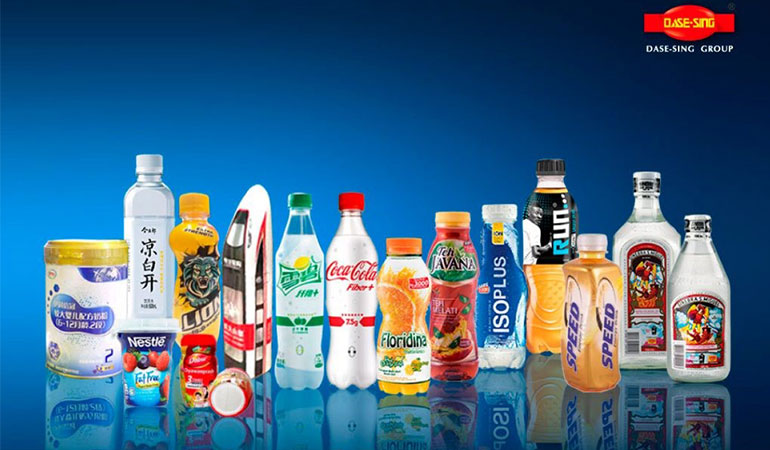
Shrink sleeve labeling has become one of the fastest growing packaging trends. The ability to incorporate bright colors and attractive designs to the surface of the product, and the adaptation of labels to packaging of all shapes are a great attraction for many industries, including food and beverages, pharmaceuticals, and personal and household items.
According to a report by Smithers Pira, the market for stretch and retractable sleeves grew 12.5% in the last decade. But what trends have influenced the increase in demand? Here we tell you:
Flexibility in designs and production
Shrink sleeve labeling offers tremendous design advantages, especially for food and beverage packaging and consumer goods packaging. The sleeves offer 360-degree coverage on the packaging, offering ample space for designers to include the information required by regulatory entities and, at the same time, create all kinds of attractive designs that catch the consumer's attention at the points of sale. For example, shrink sleeves can be used to sell products of different sizes. This flexibility is ideal for free sample campaigns of new products or 2x1 promotions. It is also widely used to reduce excess inventory by selling slow-moving items packaged with other products in higher demand.
The flexibility offered by the retractable sleeves goes further. Since these can be used in packaging for multiple products, little time is required to transition from the packaging line when labeling a new product. This not only saves you time and money, but also allows you to adapt more quickly to your customers' demands and to quickly move to the production of new products when supply runs out.
Use of recyclable materials
Most labels, like pressure sensitive labels, require strong adhesives that may not be recyclable and environmentally friendly. Pressure sensitive labeling uses materials such as silicone paper and film liner, plastic and foil paper, acrylic adhesive emulsion, solvent, and rubber bases. Full body shrink sleeve labeling uses fewer materials compared to sensitive labeling, making it a more sustainable option.
Additionally, shrink sleeves can be made from environmentally friendly and, in some cases, biodegradable materials. For example, there are already labels in the market made from cPET that have special inks, which are removed during the packaging wash process, leaving a colorless cPET label that can be retrieved along with the bottle. Other brands have opted for retractable sleeves based on biodegradable fibers such as corn, which are 100% compostable.
New shapes, the key to stand out from the competition
Retractable sleeve technology optimizes the printable label area with 360-degree graphics to fit containers of any shape and size. This allows going beyond traditional formats and designing packaging that allows product differentiation on the shelves.
In this sense, the predominant trend is the design of geometric packaging that can not only help the product stand out, but can also serve to add functional characteristics that improve the consumer experience.
Shrink Sleeve Machines
For your brand to take advantage of these trends, it is essential to have a machine with an integrated fit design that maximizes the versatility of operations and can accommodate all types of shrink sleeves, from cap seal sleeves and full body sleeves, up to the fixed labeling in the middle body and the upper or lower overlapping sleeves.
Dase-Sing offers you comprehensive solutions for every stage, from R&D services for shrink sleeve printing to automatic banding machines that improve the productivity and performance of your packaging facility.
To learn more about how Dase-Sing can solve your needs in shrink sleeves, enter your information in the form below.